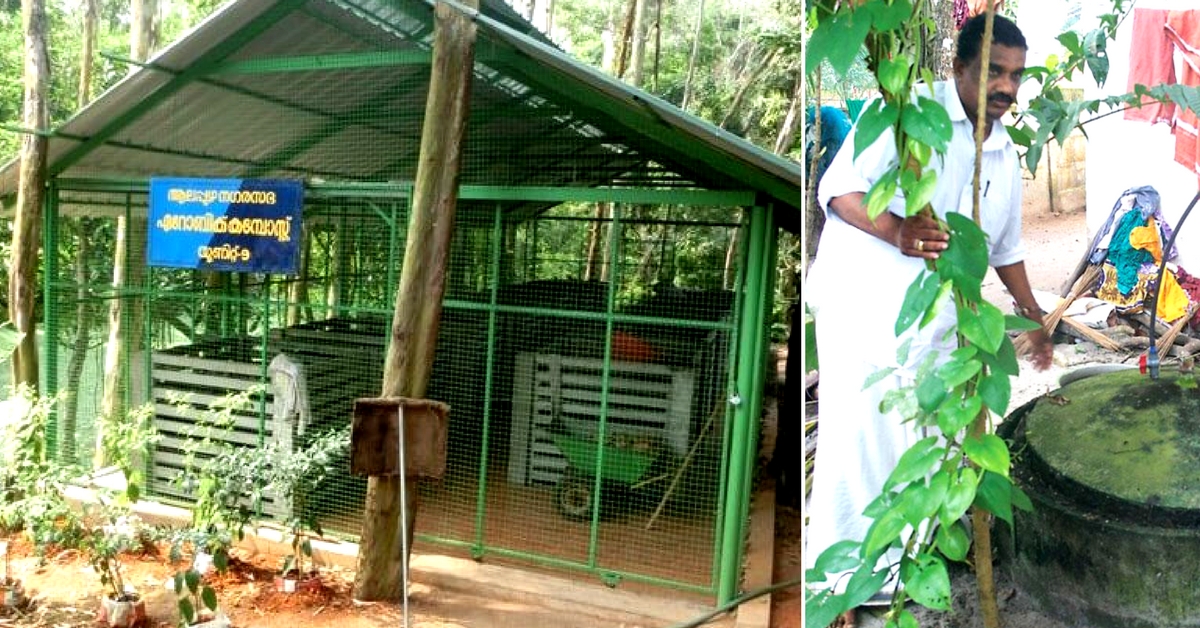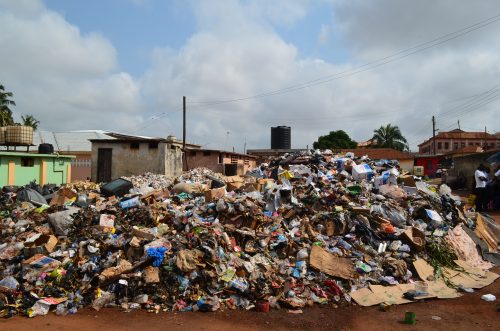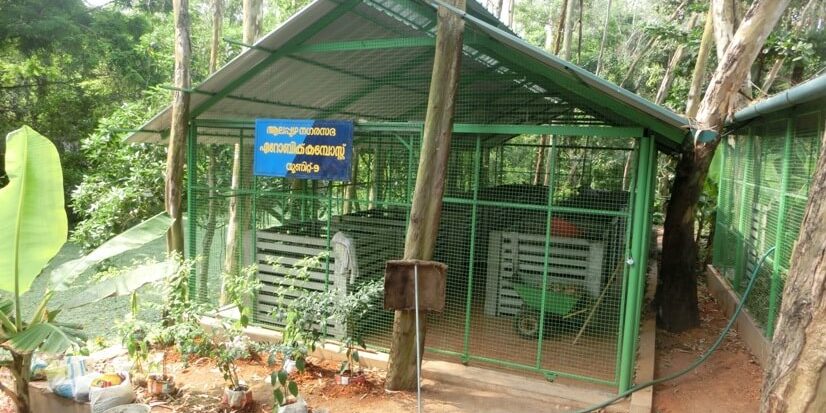How Kerala’s ‘Zero-Waste’ Alappuzha Won a Spot Among Top 5 Cities in UN List
By turning a major garbage crisis into an opportunity, Kerala's Alappuzha has shown how urban waste can be successfully and sustainably managed.

Until about five years ago, visitors to the sleepy seaside town of Alappuzha would be greeted by heaps of garbage and plastic waste at every other intersection. The insanitary conditions had also made the town an abode of ill health, seriously jeopardizing its reputation as a tourism spot.
In fact, it had become nearly impossible to walk on public roads and along the town’s canals, thanks to the putrid stench rising from the piles of filth.
Located in Kerala, a state with the longest life expectancy and lowest infant mortality, Alappuzha was a paradox of high morbidity caused by environment-related diseases.

The civic authorities did try to tackle the town’s solid waste problem by setting up a waste treatment facility at the Sarvodayapuram but it was met by protests from agitated locals who realised that this entailed nothing more than the creation of additional landfills.
After the protests grabbed the headlines in 2012, the state government finally got down to work. A decentralised plan was formulated that would enable households to go green and treat domestic biodegradable waste in their own backyards.
Today, both the citizens and civic officials of Alappuzha are a happy lot. Not only has the success of the campaign — called ‘Nirmala Bhavanam, Nirmala Nagaram‘ (Clean House, Clean City) — reduced the weight of waste management that earlier rested solely on the shoulders of the municipal authorities, it has led to the town winning the title of ‘cleanest city in the country’ by the Centre for Science and Environment (CSE).
Furthermore, Alappuzha was recently recognised by the United Nations Environment Programme (UNEP) as one of the five model cities across the world for successfully and sustainably managing solid waste.

So how exactly was this commendable target achieved?
When Alappuzha began its cleanliness drive, the town was producing nearly 58 tons of waste on a daily basis. Most of this was dispatched to Sarvodayaparum, which had become a receptacle of stinking urban waste.
The first step the government took to tackle this problem was sensitizing people to adopt a holistic approach towards hygiene, sanitation and waste management. Through a dedicated door-to-door awareness campaign, residents of Alapuzzha were educated about the many benefits of waste segregation.
Sanitation clubs were formed in schools and students were encouraged to collect plastic in return for coupons (worth Rs 20 for each kilogram of plastic) that could be used to buy books at select shops. Songs, street plays, exhibitions and marches were also utilised to encourage community participation.
Next, realising that door-to-door collection and centralised treatment of waste was not practical in cities with a very high-density population (like Alappuzha), the government also decided to introduce a decentralised waste management system on a pilot basis.

The approach of this project was simple. Every household in the ward would have to install an aerobic pipe compost or a more-expensive portable biogas unit to process its organic waste. Both the options would be heavily subsidized by government agencies such as Agency for Non-conventional Energy and Rural Technology (ANERT) and Integrated Rural Technology Centre (IRTC).
For example, a pipe compost unit, that sells in the market for Rs 1000, was offered to households at Rs 100-120 with the municipality and the state government sharing the subsidy of 90%. Similarly, a biogas unit, that costs Rs 15000, was given at a 75% subsidy —that translated into an affordable cost of Rs 3750 for each household.
The objective of both was the same: converting domestic wet waste (food leftovers, vegetable and fruit peels etc) into usable bio-manure. Every ward would also have its own maintenance team consisting of two or three trained women.
As for the plastic waste, it would be periodically collected (on specified dates and specified locations) and handed over to either private contractors or the state-owned Clean Kerala Company for recycling.
If for some reason a household was not able to process its organic waste (for example, if it didn’t have any land), its residents would be responsible for bringing it to the collection points set up by the municipal corporation.
The collected organic waste would then be composted in aerobic compost bins installed in various parts of the city. These bins were an innovation by the Kerala Agricultural University. In these bins, organic waste and dry leaves were layered in a well-ventilated manner and sprayed with an inoculate of cow dung culture.
Each bin could process 2000 kgs of waste and create high-quality compost in three months. The responsibility of managing them was given to municipal workers (who earlier worked as garbage collectors/segregators).

However, while the idea was simple, implementing it wasn’t as easy as it seemed. Initially, the civic authorities trying to set up compost bins had to face stiff local opposition. So it was decided that they would be set up in the worst garbage dumping areas in Alappuzha — nothing could be worse than the existing situation.
These sites were cleared and bins were set up in sheds that had been beautified by attractive murals and potted plants. For instance, the largest community compost centre, Wat-San Park, was set up with the support of artists participating in the Kochi Biennale. With flourishing vertical gardens and greenhouses, the frequently visited compost centre seems almost like a park today!
You May Like: This Low-Cost Technology Is Helping a Puducherry Village Treat Its Wastewater, and It Uses Plants!
In addition to this, the municipality deployed squads of community workers to check the dumping of garbage on streets. Surveillance cameras were also set up at various points in the city. A penalty of Rs 2,500 was introduced for those caught littering the streets.
Seeing the immediate impact of the pilot project, within a month, the Alappuzha municipality rolled out the scheme in more wards. This was complemented by a dedicated effort that led to the construction of over 98000 household toilets, surpassing their own target of around 87000. Of these, nearly 61000 toilets were built for below poverty line (BPL) families.
Till date, Alappuzha’s urban body has established 5,000 kitchen bins, 3,000 biogas plants, 2,800 pipe composting units and 218 aerobic composting units in all its wards to take care of 80% of its waste.
Additionally, a convenient supply of biogas and manure has been provided to its 1.74 lakh population.

Also, doing away with the door-to-door collection has helped the Alappuzha municipality save a substantial sum too. The money spent on operating trucks to transport waste to the dumping yards (about Rs 50 lakhs) has been saved entirely. Moreover, selling the produced biogas and manure fetches up to Rs 60 lakhs and 30 lakhs respectively.
Unsurprisingly, the resounding success of Alappuzha’s decentralised waste management model has inspired several other municipalities and village panchayats in Kerala to adopt it. This includes Thiruvananthapuram, the capital city of Kerala which is more than double the size of Alappuzha. A successful implementation here will be the best way to illustrate the idea’s feasibility in bigger cities!
Also Read: How Kannur Worked to Become India’s First Plastic-Free District in Just 5 Months!
Like this story? Or have something to share? Write to us: [email protected], or connect with us on Facebook and Twitter.
NEW: Click here to get positive news on WhatsApp!
This story made me
-
97
-
121
-
89
-
167
Tell Us More
If you found our story insightful, informative, or even just enjoyable, we invite you to consider making a voluntary payment to support the work we do at The Better India. Your contribution helps us continue producing quality content that educates, inspires, and drives positive change.
Choose one of the payment options below for your contribution-
By paying for the stories you value, you directly contribute to sustaining our efforts focused on making a difference in the world. Together, let's ensure that impactful stories continue to be told and shared, enriching lives and communities alike.
Thank you for your support. Here are some frequently asked questions you might find helpful to know why you are contributing?



















